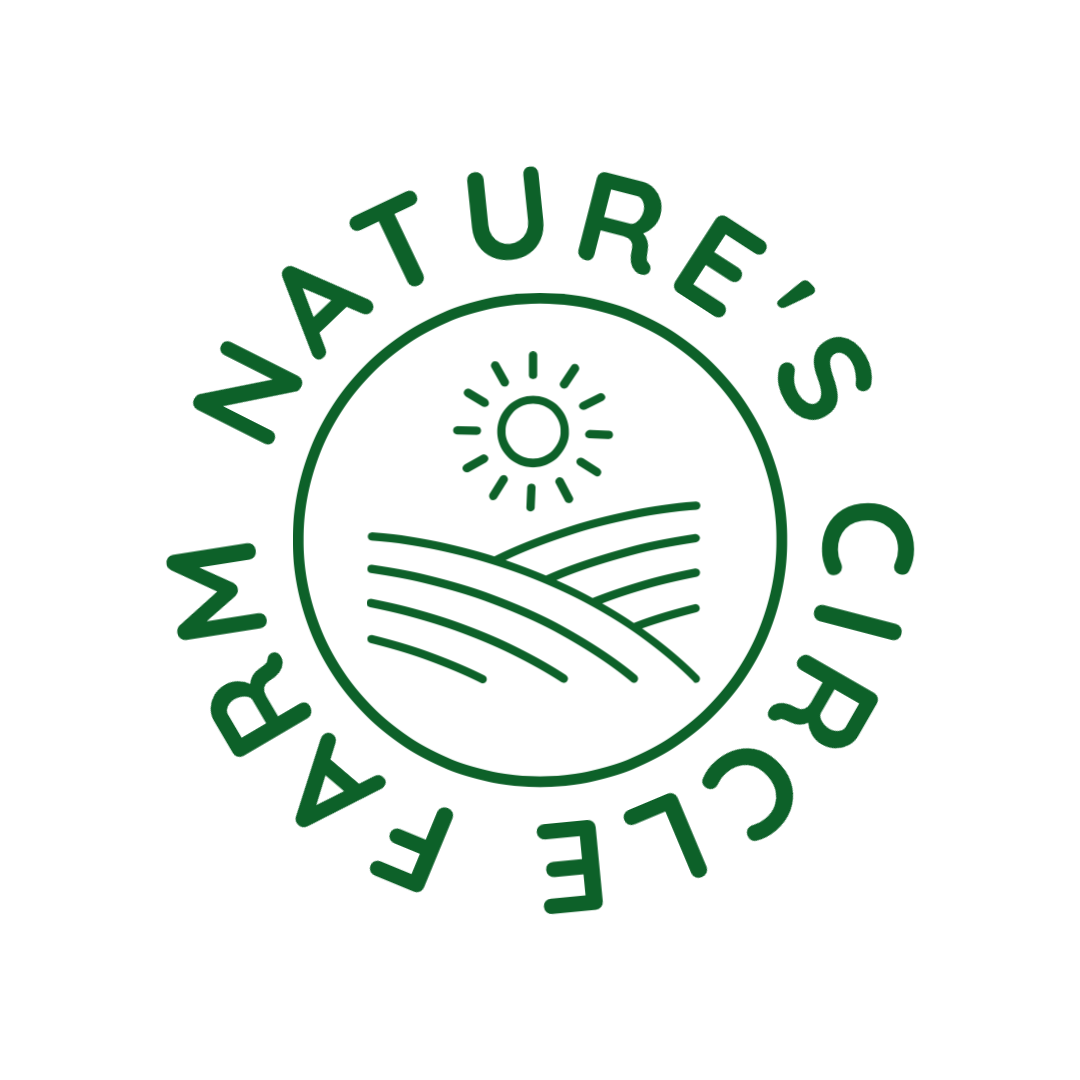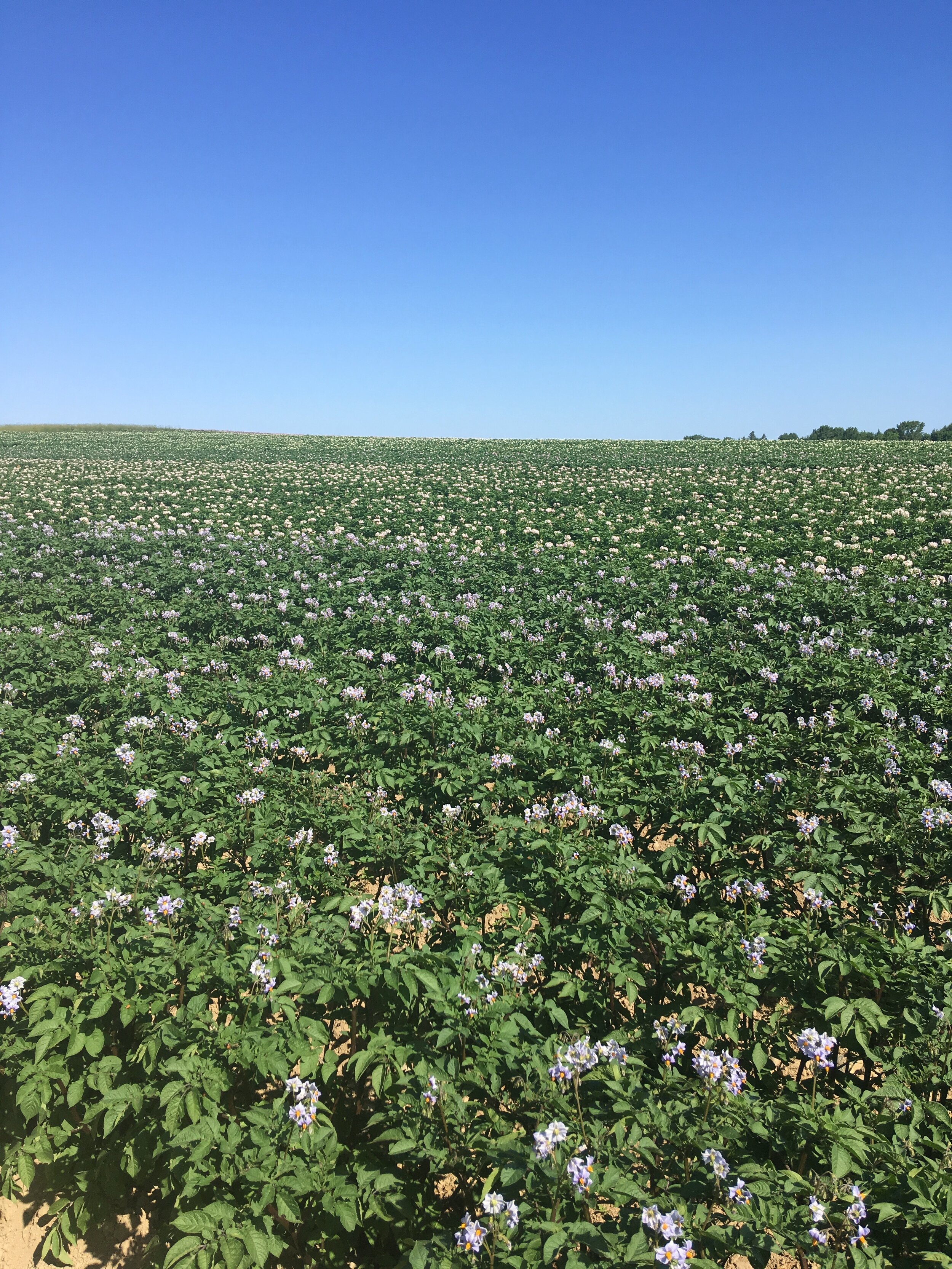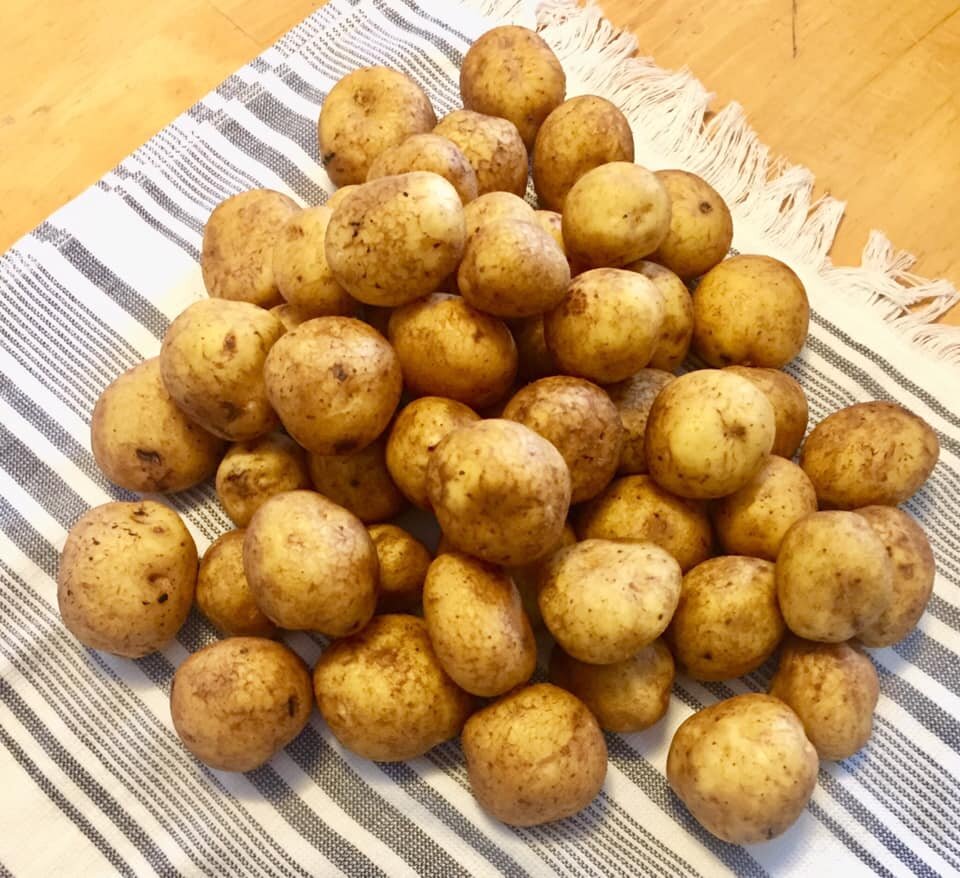One of my jobs in addition to a full-time mother of three, is selling organic vegetables and Double-Certified Potato Seed. What is Double-Certified Potato Seed, you ask? Double-Certified means that our potato seed must pass inspection through two qualifying agencies: first, MOFGA (Maine Organic Farmers and Gardeners Association) to label it certified organic; and secondly, the state of Maine, to license it as state certified seed. The state of Maine is well known for having strict requirements on potato seed. The state seed certification program requires each of our seed varieties go through several rigorous tests. Our seed plots are first tested for disease two times in the field, then samples of our seed are regrown in a lab for signs of disease in a post-harvest test. Finally, our seed inspector does a shipping inspection during packing and before shipping the seed out. After all that, there is something to be said for that state of Maine blue tag of approval on each bag of seed.
For those of you brand new to potato seed, a “seed potato” piece is simply the potato itself or the “tuber” as it is also called, or a piece of the potato or tuber that contains an “eye” that can produce a sprout. While it is possible to regrow potatoes from just about any piece of potato that contains an eye, it is really not recommended, and in some states for larger growers, it is not even allowed. To get down to basics, everything starts from something, right? Potato seed is categorized into “generations” or “field years”. What this means is that the original seed is a laboratory-grown, disease-tested parental stock of a particular variety, also called “pre-nuclear” stock. While it varies from state to state, any field year or generation after this pre-nuclear stock has produced nuclear seed, it is numbered. For instance, after the nuclear seed is produced and regrown in the field, it is referred to as Generation 1 (G-1) or Field Year 1 (F-1). Here in Maine, we only grow to G-5 (Generation or Field Year 5) before it is no longer allowed to be grown as certified seed. If you have followed me so far, as I mentioned in the previous paragraph, certified seed is tested several times for disease. You ideally want your seed pieces to be as disease free as possible, which would certainly not be guaranteed if you planted random potatoes from the grocery store into your garden or field. Many conventional potatoes from the grocery store also may have been treated with chemicals to prevent sprouting, so it would not be good to try and plant these. Because we are certified organic, we do not treat our potatoes with any chemicals. Our seed stock is also heavily protected and stored into boxes in separate bins from table stock in a temperature and humidity-controlled environment to further prevent disease. As you can see, it is really ideal even if you just have a small garden plot in your back yard, to plant certified seed potatoes.
I started selling potato seed in 2004, after deciding to leave my full-time job as a licensed social worker to stay at home with my one-year old daughter. I had no idea what I was doing! I had to do extensive research on each of the varieties I was selling, and I would often get questions I did not know how to answer. Thankfully, I had the farmer (my father) and our farm manager as experts to consult with, and I used them as knowledge bases often. Now that I’ve been selling potato seed for over fourteen years I have a little bit of experience under my belt, but I still get questions which force me to reach out to the experts!
The fact is, there is so much to learn about growing potatoes of any kind. Farmers that have been doing it for many years still don’t have all the answers, and they’ll be the first to tell you that. There are so many variables involved in growing potatoes: climate, soil type, disease, weather, proper drainage, market fluctuation, etc. And that’s just to name a few.
At Nature’s Circle we are currently growing fourteen varieties of certified potato seed. Our varieties do vary from year to year for several reasons, including seed availability, disease resistance, and market demand. However, there are a few “old standbys” we grow every year. Now, let’s just talk about those standby varieties, and why we continue to grow them every year.
Kennebec: When you think of a Kennebec potato, you think of Maine. Hearty, robust, rugged, and dependable just like the state that created the variety, we rely on the Kennebec year after year after year. This variety has been around since WW II, and it is one of the most disease resistant varieties around. If you ever sunk your teeth into French fries or potato chips back in the 1950’s, they were most likely made from Kennebec potatoes. After all, Kennebecs were the number one variety used in the United States and Canada for several years. They are a trusted culinary variety, and hold up well in all modes of cooking and processing. In fact, cooks and gardeners everywhere prefer the Kennebec and it is in the top ten of the most popular varieties in Maine. A few years ago, we sold our Kennebecs to a very high profile company who used them to make organic French fries at their first organic fast food venue in southern California. Eventually the shipping costs from Maine to California became too costly and the company began purchasing their potatoes from more local farmers. But we had very good reviews about the scrumptious organic French fries made from our Maine Kennebecs, and how the lines were so long to buy them, people would wait for hours despite the fact it was supposed to be “fast food”.
Kennebecs are incredibly high yielders, are very adaptable to different climates (and soils), and produce large tubers. If you do not want overly-large tubers, plant your seed at 8-10” spacing. These versatile, white flesh and buff-skinned potatoes are fast-growing at only 80 days to maturity from direct seed! Seriously, I think it has been said that you could literally grow Kennebecs in your driveway, they thrive so well. Honestly, could there be a more perfect potato? Perhaps for you…read on!
Yukon Gold: Interestingly, this cultivar was released from Canada in 1981, and its principal creator, Gary Johnston named it “Yukon” after the Yukon River and gold rush country in northern Canada. “Gold” was added later for effect. The name does do it justice as it is a beautiful golden potato, inside and out. With a thin, light yellow skin that bears pink eyes, especially just after harvest, and a waxy, moist flesh with a golden hue, Yukon Golds are very pretty tubers. You can’t survive on looks alone though, and these potatoes won’t let you down. They are absolutely scrumptious baked, boiled, or fried and they are moister than their white-fleshed cousins due to their medium starch content. They have a sweet, rich flavor that wins them many points with top chefs. They also hold up well in stews and slow roasts. They have a few more benefits including early maturity, at just 60-80 days. Many of our seed customers prefer to plant the Yukon Gold very early, then stagger their other yellow varieties as the season progresses. Yukon Golds have other perks as well, such as excellent storage ability, as they are known to hold moisture better than other cultivars. They do not bruise easily and they tend not to sprout because of their good dormancy. However, they are not without their problems…
Yukon Golds are what I like to call temperamental. On a good year, even a fairly dry year, which has been the trend for us northern Mainers in the past couple of years, these potatoes are practically perfect. They come out of the ground beautifully yellow and smooth, they look polished and waxy when washed, they are solid and golden on the inside when cut, and they are creamy and delicious to the taste. They sell easily and quickly. They are in high demand as soon as they are out of the field. BUT on a wet year, these babies can be a nightmare. Yukon Golds are known to be resistant to mosaic, leafroll, bruising and sprouting, but they are susceptible to early blight, late blight, black leg, silver scurf, black scurf, hollow heart, Virus Y, and common scab. Despite their many susceptibilities to disease during a poor season though, they tend to do very well overall and continue to be a very popular variety. We, like many of our fellow farmers, plant them and harvest them early for our table stock, and then move on to other favorite yellow varieties for the remainder of the season.
Dark Red Norland-This is a variant of the “Norland” which was released by the North Dakota Agricultural College in 1957. We like to shorten the name Dark Red Norland to DRN since we use the term frequently at Nature’s Circle Farm, as it is by far our most popular seed variety. We sell many thousands of pounds of organic DRN seed every year and we also grow it ourselves as a table stock variety. Like the two above varieties, DRN is a very early variety, with about 70-90 days to maturity. You can harvest it earlier than that, especially if you are going for a smaller roasting potato, and as long as you don’t mind the red skin peeling before it matures and seasons. DRNs are one of the most beautiful early potatoes there are on the market. When they first come out of the field, they literally look like rubies. And they are so moist, they barely need to be boiled or steamed, and you won’t need to add much butter or oil either. A little salt and pepper, a tiny dab of butter or olive oil and you’ve got yourself a real treat. They are especially good in a warm potato salad, where you toss them with fresh minced garlic and soy sauce while they are still hot in order to adhere the flavor. Generally, without seasoning they have a sweet, delicate flavor, and are also excellent roasted as small wedges with oil, oregano or rosemary, salt and pepper. DRNs also hold up when fried much better than other red varieties, making them a great variety for a hash.
Dark Red Norlands in addition to being beautiful, productive good yielders with uniform sizing, are somewhat resistant to PVA, common scab, rhizoctonia, cracking, hollow heart, misshapen size, and late blight. They are susceptible to Potato Virus X, potato leaf roll virus, early blight, silver scurf, and powdery scab. Like the Yukon Gold, many of our seed customers prefer to plant the DRN early in the season and plant other red varieties later in the season.
I have outlined for you three of our “Old Faithful” varieties that we stick to every year, as they do not let us down when planted correctly. Please stay tuned for the next blog post which will feature some of our other early, mid, and late seasoned varieties that are becoming more and more popular.
Margaret “Meg” York, Sales and Marketing at Nature’s Circle Farm
Houlton, Maine (207) 592-1476




